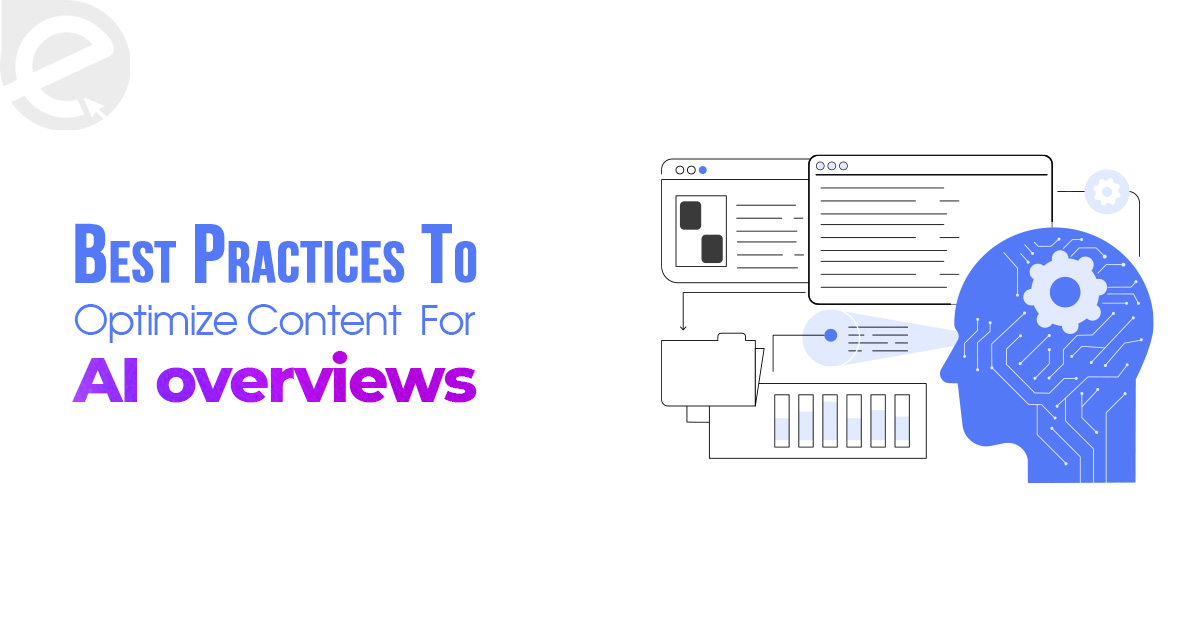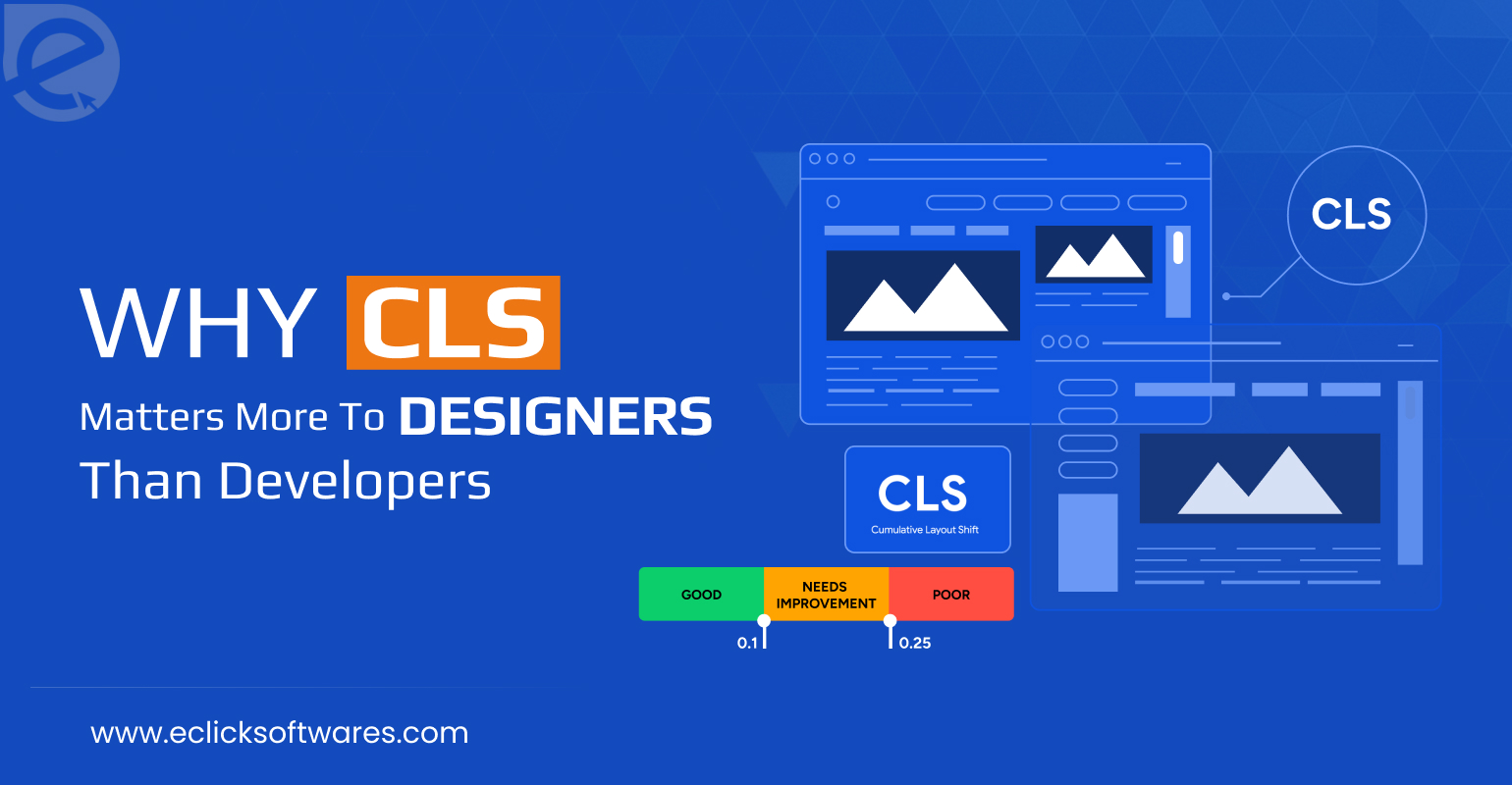
We Develop Websites Keeping Marketing in Mind
Best strategies to optimize website content for AI overviews
 Jun. 04, 2025, 12:00 AM
Jun. 04, 2025, 12:00 AM- By Eclick Softwares and Solutions

The rules of intent-based marketing on Google are currently transforming rapidly. Creating your content marketing and search engine optimization plans using outdated strategies cannot make your content stand out to be discovered and retrieved by AI overviews on top of Google's search engine result pages. Successfully securing a spot in Google's AI overviews can offer a competitive edge to businesses. AI-generated summaries provide quick, relevant information directly in search results, reducing the need for users to browse through multiple search results to find basic answers. This shift is changing how users interact with search engines and sometimes impacting organic traffic to websites, as fewer users now click on individual pages.
A recent study revealed that only 33.4% of AI overview links rank in the query's top 10 organic results. This indicates that SEO optimization alone does not guarantee that the URL will be included in the AI overview of the query. Optimizing your content specifically for AI overviews is the key to staying ahead of your competitors.
Understanding the advantages of ranking in AI overviews
• Competitive advantage and brand authority- Ranking in AI overviews portrays your website as a trusted authority. That is because being included in an AI summary shows users that your content is of high-quality and trustworthy. High authority increases user trust and click-through rates, improving organic performance.
• Better visibility and increased traffic- When your content ranks in the AI overviews, it increases the visibility of your website in search engines, placing your content above organically ranked websites. Users are more likely to trust the aggregated AI summary, and that is why your website benefits from better brand recognition.
• Diversification of organic search channels- AI overviews diversify the organic search engine strategy by adding an extra channel for visibility. It works by supplementing traditional search results with an AI-generated summary that captures user intent and aggregates top sources. Therefore, your content reaches an audience who are looking for to-the-point answers while driving traffic through supporting links.
Understanding key strategies to optimize content for AI overviews
1. Create unique and valuable content
To qualify for AI Overviews, your content needs to be more than accurate. It needs to be valuable, unique, and purposefully built to answer the queries of the users. That means you need to ditch "commodity" content that is often mass-produced and merely repeat other content found on search engine result pages. You need to create contents that offer value that visitors from search will find helpful and satisfying.
How to do it:
• Understand what your audience is looking for and carry out in-depth research on your topic.
• Aim to offer complete answers to the queries as AI overviews ignore content with incomplete information.
• Write for humans, not for search engines. Optimize your content to build credibility, not for keyword loading.
2. Make sure your content is well structured and scannable
When your content is well structured, the chances of it being retrieved by AI overviews increase significantly. Proper use of headings and subheadings makes it easier for AI systems to understand and process your content to provide quick answers to user queries.
How to do it:
• Provide the answer to the main question right away. Clear and concise answers to questions backed by logic often get featured on AI overviews.
• Break long content into shorter paragraphs. For better readability, each paragraph should ideally contain no more than 2-3 sentences.
• Make use of bulleted or labeled lists to provide information as this format is often directly used in AI overviews.
• Implement H1 to H6 tags for maintaining a logical flow of your content, that helps AI systems to understand the context easily.
• Use strong tag to highlight the important points across your content.
3. Optimize for conversational queries
Google's AI Overviews are built to respond to longer and more descriptive questions. People do not often type short keywords these days as they ask long questions in natural tones with follow-up questions. AI Overviews work as an assistant that answers swiftly, in clear terms, and conversationally.
How to do it:
• Implement question-based headings (e.g., "What is the best time to water plants?").
• Insert FAQ sections that deliver user queries in plain language.
• Use summary-style, brief answers followed by explanatory details.
4. Make use of keywords and natural languages
Proper placements of keywords and the use of natural ranking are crucial for ranking in AI overviews, as they respond to conversational queries. You need to ensure all your content, be it web page content or your blog posts, is written in a conversational tone, where keywords have been inserted carefully.
How to do it:
• Use long tail keywords as they are more specific than the general keywords.
• Employing semantic search can help you cover a broader range of search queries by using related terms to your keywords.
• Use proper headings, subheadings and bullet points to give your content a structure that can be easily followed.
5. Build authority with E-E-A-T
Pages that continuously show expertise in their subject are more likely to be cited by AI overviews. AI summaries prefer content with high authority and credibility. You can build content authority by emphasizing Experience, Expertise, Authoritativeness, and Trustworthiness (EAT), particularly for content related to health, finance, or law.
How to do it:
• Add publication and last updated dates to ensure transparency.
• Link to and cite reputable external sources.
• Create a content ecosystem—blogs, whitepapers, case studies, interviews—that support your expertise on major subjects.
6. Ensure Google can find your content
It is important to meet Google's technical requirements to guarantee your content can be crawled and is relevant for inclusion in AI Overviews. If Google is unable to crawl or access your page, your content will not be considered, regardless of its quality.
How to do it:
• Make sure the web page URLs have 200 status codes.
• Googlebot must not be blocked in robots.txt or meta tags.
• Your content must be indexable, and you need to use canonical tags properly to avoid indexing multiple versions of the same content, leading to duplicate content penalties.
7. Use structured data that reflects visible content
Structured data helps Google understand the meaning of your content, so it is more likely to appear in AI Overviews. However, it is important to remember that contradictorily structured data can restrict your visibility. According to Google's latest guide, you must not use structured data that contradicts what people can actually see on your page.
How to do it:
• Use appropriate schema types like “Article”, “FAQPage”, “HowTo”, or “Product”.
• Ensure all marked-up content is user-accessible.
• Validate your markup with the Rich Results Test or Schema.org Validator.
• Avoid spam or misleading markup, as it might result in penalties or de-listing.
8. Aim for multi modal success
According to Google, individuals are now performing multimodal searches—such as uploading a photo and asking something about it. For ranking your content in AI overviews, you need to support your text with images, video, and context from the real world. AI Summaries can use multimedia-filled pages that offer not only clean text content but also visual elements.
How to do it:
• Add relevant, high-resolution images to your content, and use descriptive alt text.
• Include short-form videos that explain or demonstrate key concepts.
• Use infographics or data visualizations to convey complex information quickly.
• Ensure videos are embedded and hosted in a way that does not slow down your site.
AI Overviews represent a significant change in the way Google delivers information. However, it does not change how Google defines quality content. Quality content with a people-first mindset and proper technical setup can help in building authority and increase the chances of getting featured on AI overviews. A content creator needs to recognize the opportunities offered by AI overviews, such as deeper engagement, broader reach, and more meaningful connections with audiences. By focusing on quality, accessibility, user intent, and adaptability, your content can gain relevance and visibility.
Related Blog
- By Eclick Softwares and Solutions
- November 21, 2025
10 Surprising Benefits of ...
Chatbots for websites deliver 10 hidden benefits. Enjoy 24/7 ...
Read More- By Eclick Softwares and Solutions
- November 13, 2025
How CLS Impacts Design Mo ...
Know why CLS holds greater weight for designers than develop ...
Read MoreSearch Blog...
Recent Posts
Eclick Services







